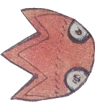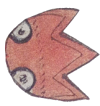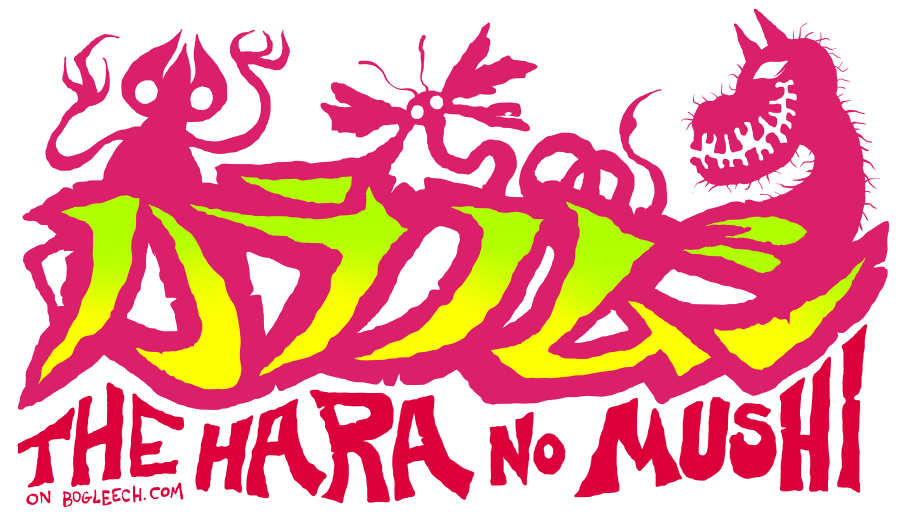
DAY TWENTY FIVE: CHOUMAN
Written by Jonathan Wojcik, Researched and Translated by Rev Storm

This one's name is literally just the word for when your stomach becomes bloated with gas. It is described as having a "red chest portion" with "white tentacles," and sits in the victim's abdomen while sending its tentacles all the way to the fingers and toes, filling the host's body "to near bursting" while weakening the limbs and causing nausea. Victims are unable to swallow most things, but like cold, sour foods, referred to as foods that are "bad for them."
Design Review:
By this point in the actual book, the remaining Hara no Mushi are all just pale blobs and chunks like this, intertwined with white worms, and generally only represent different organs infested by multiple "bugs" at once. We are not, however, reviewing these in "book order," so a lot of our remaining entries for this feature will be the more exciting ones. This is an interesting exception of that final chapter however, as it is the only one whose central glob is actually described as a part of the "bug" itself. In that context, I very much like this flabby glob with worms for arms, and the coiled-up worms even kind of evoke a pair of swirly eyes! What a nerd!
TODAY'S REAL WORLD "PARASITE:"
Hydatid Tapeworm
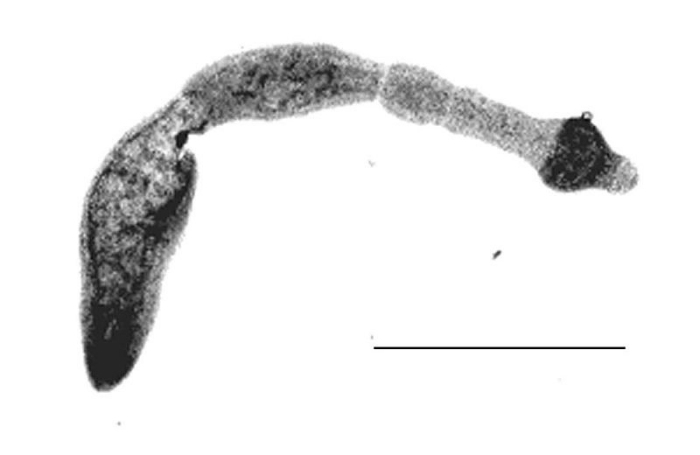
A big mass of worms that spreads through the body, eh? Maybe you thought we'd covered everything to do with tapeworms by now and that they couldn't get any weirder nor their larvae any more horrifying, but you would be terribly mistaken.
The tapeworm genus Echinococcus included a couple different species that normally infect canines, but can accidentally end up in the human body the same way we've discussed before: we get infected by the adults if we consume under-cooked meat containing the larvae, but we get infected by the larvae if we accidentally swallow the eggs. It's at this point however that they begin to diverge a bit from other tapeworms.
Adults, as you can see in the image, are actually rather short. They only ever grow a couple of segments, they don't naturally break themselves apart and only the end segment produces any eggs. The whole worm can remain less then a centimeter in length, and they tend to infest the host in large numbers at once.
That is because a host will usually ingest many larvae at once, rather than the one or two at a time you're more likely to pick up with other tapeworm species, and the reason for this is going to be one of the weirdest and most distressing things you'll have probably ever heard about this group of animals.
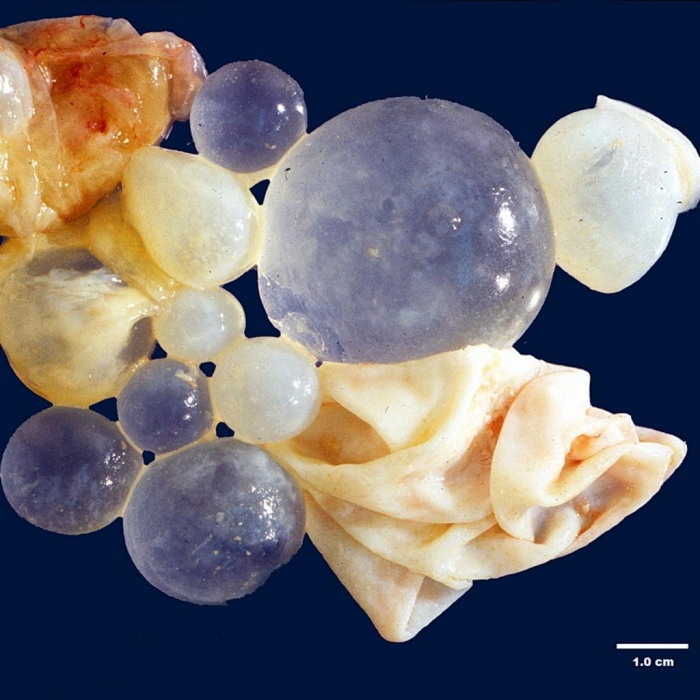
When the egg of an Echinococcus is digested, it doesn't just hatch into a single little tunneling larva and leave it at that. No, it hatches into a single little tunneling larva initially, but once that larva nestles itself somewhere in the liver, muscles, brain or just about any other tissue, it undergoes an outlandish transformation into a different type of larva called the Hydatid cyst.
The hydatid cyst looks like a transparent bubble, but it is a living organism, and more larval tapeworms are constantly replicating from the inner lining of the cyst's walls, hundreds of them sprouting like fields of grass in the bubble that is technically also them but also kind of their eldest sister, like a baby transforming into a giant womb that just keeps making more babies.
This cyst keeps growing, filled with fluid and hundreds or even thousands of microscopic tapeworm larvae, and can quickly become large enough to cause serious complications for the host, by which I mean here is an x-ray of such a cyst growing in a human brain and you're not going to believe me that the patient made a full recovery to completely normal, healthy brain functionality, but she did.
As the cyst grows, it also begins to develop "brood capsules," which are themselves complete, miniature hydatid cysts filling up with worms of their own. Two different species affect dogs and sometimes find thei way into humans, and each has a different approach to this. In Echinococcus granulosus, the brood capsules develop on the inner lining of the main cyst, just like the clone larvae, and the huge bubble soon has many littler bubbles floating around inside it, some getting large enough to start filling up with their own little brood capsules like the worst nesting doll in the world. Thankfully, it all keeps itself contained to that single, original cyst, which is referred to as being unilocular and makes it a whole lot easier to remove.
Echinococcus multilocularis is not so courteous. It doesn't just fill up with brood capsules on the inside, but sprouts little fingers on the outside that eventually grow into daughter cysts of their own and repeat the process, aggressively spreading itself through the host's internal tissues like a malignant cancer, and sometimes, in either species, a hydatid cyst can...break. It can break, and tens of thousands of microscopic worms can gush out into the host's body cavity, and literally each and every one of them has the potential to take root somewhere and grow into a whole new worm-womb. I don't need to tell you that this is typically deadly.
This is definitely a case in which our real parasite is significantly weirder, more monstrous and more dramatic than the Hara no Mushi we're looking at, but both cases involve a blob-like parasite that can spread itself outward through the host, actually consisting of multiple worms, and cause significant pain and weakness. Luckily, humans still aren't the intended targets of these canine parasites, and human infection is very rare, but when it does happen it is typically due to eggs swallowed from dog feces, so please, please keep your wolf-monsters dewormed, clean up after them, keep small children away from their waste, and of course...

NAVIGATION:
